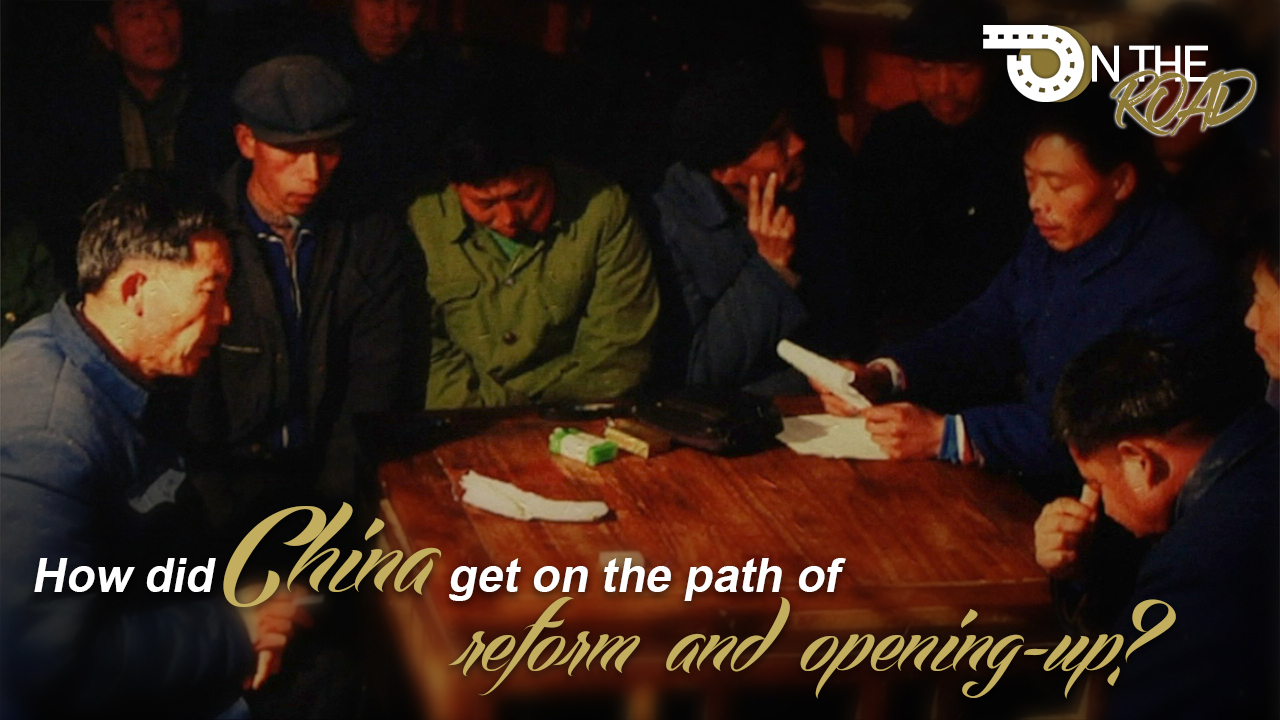04:01

To celebrate the 70th anniversary of the founding of the People's Republic of China (PRC) and present a panoramic view of the country's great journey, the 24-episode documentary "On the Road" focuses on the great achievements and valuable experiences of people of all ethnic groups in the socialist revolution, construction and reform over the past 70 years. It also recounts touching stories and important events in the country since 1949.
The ninth episode of the series looks at how China got on the path of reform and opening-up.
On a winter's night in December 1978, 18 farmers in Xiaogang Village, Fengyang County, reached a contract. It read: "We will distribute land to every household and they will sign and apply their seal." Their success heralded a reform. For five years, starting in 1982, the CPC Central Committee's No. 1 Document focused on popularizing the household contract responsibility system.
With rural reform in full swing, attention turned to the country's cities. China's first special economic zone was established in July 1979. The construction began in earnest; the land was being reclaimed, and docks built.
In October 1984, the Third Plenary Session of the 12th CPC Central Committee said that the traditional socialist economy will be developed as a planned commodity economy based on public ownership, stressing that the move was a necessity for China's economic modernization. It also stated that only through the comprehensive development of the commodity economy can the overall economy be stimulated.
From a traditional socialist economy to a planned commodity economy - reform was advancing step by step in China.